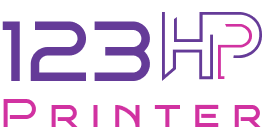Imagine a computer network as a bustling group of friends chatting and sharing things with each other. They use cables or wireless connections to connect and swap stuff. Connecting two laptops with a cable? That’s a small computer network. But the internet? It’s like a massive gang of computer networks worldwide, enabling everyone to share and communicate.
How do computer networks work?
Devices on a computer network use IP addresses, converted into hostnames through a domain name system server, to communicate over the internet and other networks. Various protocols and algorithms manage data transmission between endpoints.
For a network to function smoothly, it must adhere to specific standards or guidelines. These standards, set by organizations like IEEE and ISO, govern data communication for information exchange between devices. For example, the Ethernet standard establishes communication rules for wired networks, while the 802.11 standard outlines connectivity for wireless LANs.
Now, let’s break down Basic Network Connectivity.
- Wired Connectivity: The trusty old method. It uses physical cables like Ethernet or fiber optics for data transmission. It’s reliable and lightning-fast, perfect for tasks requiring stable and speedy connections.
- Wireless Connectivity: No more tangled wires! Thanks to Wi-Fi and cellular networks, wireless is the new trend. Wi-Fi lets us surf the internet without cables within a certain range, while cellular keeps us connected on the go, even in remote areas.
Network connectivity is a hero, but it faces challenges like signal interference, congestion, and security threats. But fear not! Technology comes to the rescue with mesh networks, signal boosters, and encryption protocols, ensuring our connectivity remains strong.
Two common computer network architectures:
- Client-server: Multiple clients exist, with at least one serving as the central server. Clients request resources from the server, which houses them all.
- Peer-to-peer (P2P): Each connected device acts as both a client and a server, sharing resources across the network. Many companies use this for memory-intensive applications across multiple devices.
User Training
Navigating new equipment can be challenging without proper guidance. Once your business receives its shiny new Machine, your Account Executive provides a quick operational overview. After setup, our Customer Relations team steps in, scheduling a personalized one-on-one training session tailored to your business’s requirements.
During these sessions, we can cover a range of topics, including secure printing, mobile printing, printing booklets, saving documents to the Machine, and document workflows. But our commitment doesn’t end there. We offer ongoing training sessions, both in-person and remotely, for the duration of your business’s Service Contract with us.
We understand that your business may evolve and welcome new team members, altering how you use your equipment. That’s why we’re dedicated to continuing the learning journey. PC MacWin provides ongoing customer education and in-person training as long as your business has the Machine. Our goal is to help your team become comfortable with the equipment and share tips to enhance productivity by fully utilizing its capabilities.
The best part? Training for your business’s equipment is included in your PC MacWin service contract, with no additional charges for instruction.
Empower your team with the knowledge and skills to maximize the potential of your printers and scanners. Our user training sessions cover essential operations, maintenance practices, and efficiency-boosting tips, ensuring your staff can handle day-to-day tasks with confidence.
Troubleshooting and Hardware Maintenance
In the fast-paced world of offices and businesses, a glitch in your printer or scanner can halt productivity in its tracks. From paper jams to connectivity issues, these disruptions can be frustrating. But fear not – our expert technicians are here to help, equipped with the skills to diagnose and resolve a variety of problems.
Identifying Issues
Printers and scanners, like all technological wonders, can encounter occasional hiccups. Paper jams, ink printing issues, smudges, print job queues, cartridge errors, and connectivity glitches are common culprits. Our troubleshooting prowess comes into play to swiftly tackle these unexpected challenges.
Troubleshooting Solutions
Our experienced team understands the urgency of resolving issues promptly. Whether it’s a paper jam or a connectivity hiccup, we’re here to assist. Our troubleshooting services are designed to pinpoint the root cause and implement effective solutions to restore your devices to working order.
Comprehensive Maintenance
Prevention is key, which is why we emphasize regular maintenance to keep your printers and scanners in top condition. Our services go beyond fixing problems – we proactively identify potential issues before they arise. Scheduled check-ups, cleaning, and software updates ensure smooth device operation and reduce the risk of unexpected breakdowns.
The Advantage of Troubleshooting and Maintenance
Opting for our services offers several benefits:
- Reduced Downtime: Our swift response and efficient troubleshooting minimize device-related downtime.
- Cost-Effective Solutions: Timely maintenance helps prevent major issues, saving you from costly repairs or replacements.
- Extended Device Lifespan: Regular upkeep contributes to the longevity of your devices, safeguarding your investment.
- Improved Performance: Well-maintained devices operate more efficiently, delivering high-quality prints and scans.
In today’s dynamic office environment, reliable printers and scanners are essential. Our troubleshooting and maintenance services are tailored to keep your devices running smoothly, ensuring seamless workflow and minimal disruptions. Trust our experienced technicians to diagnose, resolve, and maintain your printing and scanning solutions – because when it comes to technology, prevention and quick resolution are key to a productive workspace.
Data Backup and Recovery:
Understanding the Difference:
Backup and recovery play vital roles in data management, but they serve different purposes. Backup focuses on preserving and securing data, creating copies for future use. Recovery, on the other hand, involves restoring backed-up data to its original state when needed, minimizing downtime and maintaining system functionality.
Types of Backups:
- Full Backups: These comprehensive backups transfer all data from a production system to a backup system, ensuring complete protection.
- Incremental Backups: Capturing only new data since the last full backup, incremental backups save time and storage space.
- Differential Backups: Similar to incremental backups, differential backups identify changes since the last full backup, providing another layer of data protection.
Exploring Data Recovery Options:
- Granular Recovery: Allows for the retrieval of specific files or folders from a larger dataset, saving time and effort.
- Instant Mass Restore: Enables the quick recovery of multiple virtual machines, scaling back in time efficiently.
- Volume Recovery: Recovers entire groups of virtual machines simultaneously, ensuring speedy restoration.
- Virtual Machine Disk (VMDK) Recovery: Swiftly restores data and applications on virtual machines.
- Bare Machine Recovery: Reboots an entire operating system, software, and data in one go, offering a fresh start.
- Instant Volume Mounts: Instantly revives a whole volume on a Windows VM, providing immediate access to data.
- Instant Restores of VMs: Allows for the quick restoration of virtual machines to previous states, like hitting an “undo” button.
Ensuring Data Security and Recovery:
At PC MacWin, we understand the critical importance of data for businesses and individuals alike. Our comprehensive data backup and recovery services act as a safety net, providing customized solutions to protect your valuable information and offering quick recovery options in case of unexpected events. Trust us to safeguard your data under all circumstances and ensure its security and integrity.
Driver Installation and Updates
What’s the purpose of a printer driver?
A printer driver is vital software that acts as a bridge between your computer and printer, converting computer data into a printable format. This software, usually provided by the printer manufacturer, is installed on your computer or a server for office-wide access.
In an office setup, it’s crucial to have a specific printer driver for each printer type you use. Different printers communicate differently with computers, and the driver ensures accurate translation of data for each printer model. Also, since each operating system speaks its own language, it’s essential to confirm driver compatibility.
Like any software, printer drivers benefit from regular updates. If you face printing challenges, checking for updates is wise. These updates often fix bugs or issues, ensuring smooth communication between your computer and printer.
Regular updates not only solve potential problems but also improve overall performance and compatibility. This proactive approach keeps your printing processes efficient and trouble-free.
In essence, the printer driver quietly enables seamless communication between your computer and printer. By understanding its role, ensuring compatibility, and staying updated, you maintain a reliable printing environment. And if issues arise, consider a simple driver update to keep printing operations running smoothly.
Stay ahead with the latest software upgrades by relying on our team for driver installation and updates. We ensure your printers and scanners are equipped with the latest drivers, optimizing performance and compatibility with evolving technology.
Printers & Scanners Installation
Why shouldn’t you install a printer and scanner by yourself?
Ensuring your new electronic devices function smoothly is essential for their longevity and your peace of mind. Mishandling tech devices can lead to frustrating malfunctions, especially with complex items like printers and scanners.
When investing in electronic devices, it’s wise to rely on expert technicians who understand how to handle them properly.
Setting up a new printer and scanner can pose challenges, as with any tech device. Over 80% of individuals attempting self-installation encounter difficulties, risking device malfunction or unexpected costs due to accidental disruptions to device settings.
Moreover, interfering with the installation process can void your warranty. Most new printers and scanners come with warranties, which protect against defects. However, DIY repairs may nullify this coverage, leaving you responsible for repair expenses.
By engaging authorized technicians for installation, you safeguard your warranty and financial stability. Our expert technicians offer hassle-free installation services for various printers and scanners, ensuring smooth operation and minimizing downtime. Trust us to handle your installation needs efficiently and effectively.
Virus and Malware Protection:
A computer virus is a harmful piece of code designed to spread from one device to another. Belonging to the malware category, these malicious threats usually aim to damage a device or steal data.
Think of it like a biological virus causing illness. Just as persistent and disruptive, a computer virus can hinder normal operation, often requiring strong measures to remove it. Like a biological virus, a computer virus is built to replicate endlessly, infiltrating your programs and files, disrupting your computer’s normal function or even making it unusable.
What can a virus do to your computer?
Some viruses can harm your computer by corrupting programs, deleting files, or wiping the hard drive. Others focus on replicating or flooding a network with excessive traffic, making internet activity impossible. Even seemingly harmless viruses can significantly disrupt your system’s performance, causing memory depletion and frequent crashes.
How does a computer get infected with a virus?
Despite caution, exposure to viruses can happen through everyday web activities such as:
– Sharing music, files, or photos with others
– Visiting compromised websites
– Opening spam emails or attachments
– Downloading free games, toolbars, media players, and other utilities
– Installing software without thoroughly reviewing license agreements
How do viruses spread?
Viruses can spread through networks, discs, email attachments, or external storage devices like USB sticks. While early viruses spread through infected floppy disks due to limited device connections, today’s internet-connected devices offer ample opportunities for virus transmission. According to the U.S. Cybersecurity and Infrastructure Security Agency, infected email attachments are currently the most common method for spreading viruses. While not all viruses require user action, many do, such as enabling “macros” or clicking on a link.
What are the signs of a virus?
If you notice any of these symptoms, your computer may be infected:
– Slow computer performance
– Strange behavior
– Unexplained data loss
– Frequent crashes
In today’s world of increasing cyber threats, protecting your digital assets is crucial. Our robust virus and malware protection services ensure your desktops and laptops are shielded against online threats. We employ advanced security measures to create a safe environment for your data and sensitive information.









